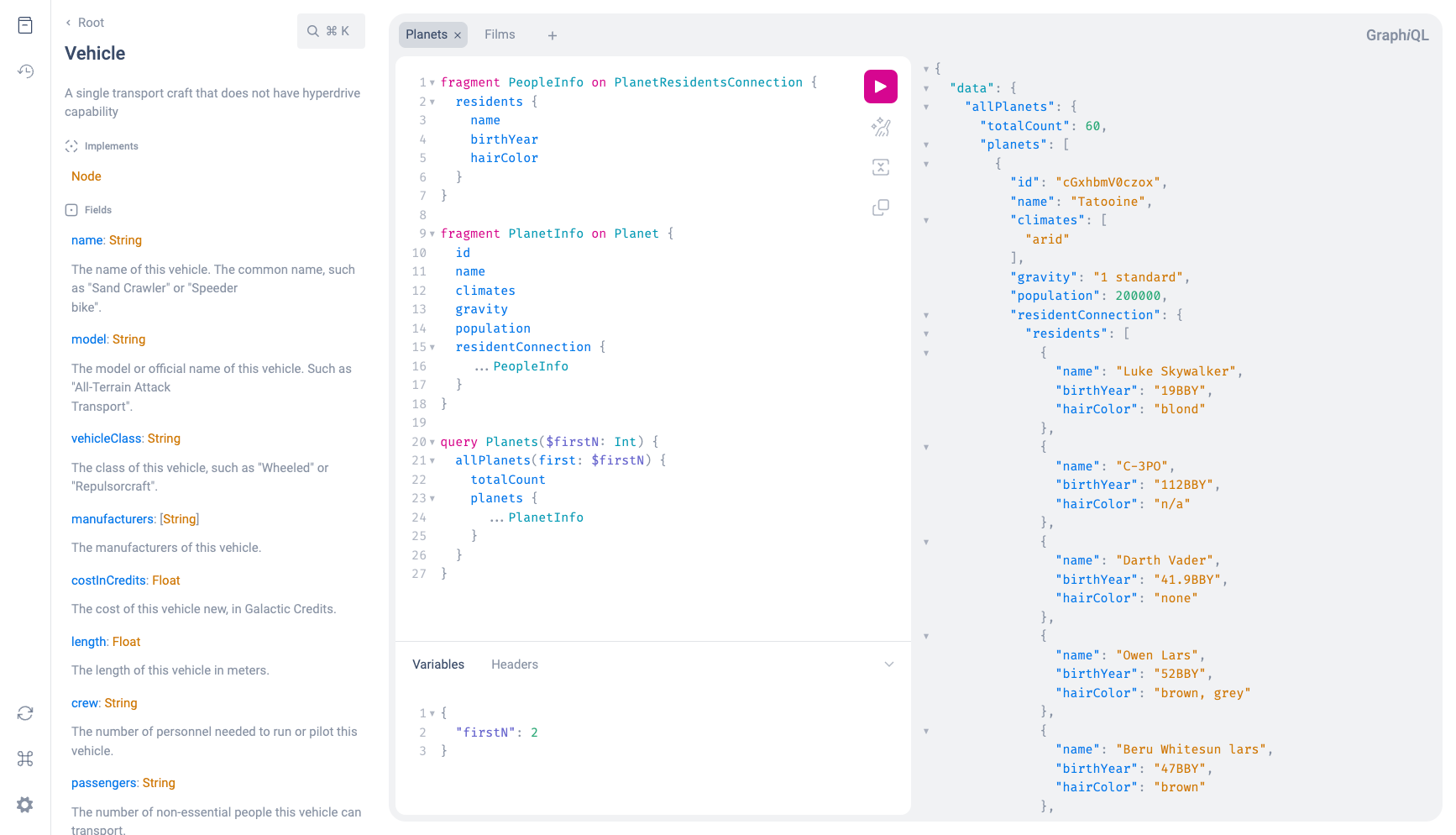https://github.com/mll-lab/laravel-graphiql
A thin wrapper for serving the GraphiQL UI from Laravel
https://github.com/mll-lab/laravel-graphiql
graphiql graphql laravel
Last synced: 5 months ago
JSON representation
A thin wrapper for serving the GraphiQL UI from Laravel
- Host: GitHub
- URL: https://github.com/mll-lab/laravel-graphiql
- Owner: mll-lab
- License: mit
- Created: 2022-08-26T08:39:43.000Z (about 3 years ago)
- Default Branch: master
- Last Pushed: 2025-05-06T07:56:35.000Z (5 months ago)
- Last Synced: 2025-05-06T08:09:31.916Z (5 months ago)
- Topics: graphiql, graphql, laravel
- Language: PHP
- Homepage:
- Size: 42 KB
- Stars: 61
- Watchers: 2
- Forks: 16
- Open Issues: 1
-
Metadata Files:
- Readme: README.md
- Changelog: CHANGELOG.md
- License: LICENSE
Awesome Lists containing this project
README
# Laravel GraphiQL
A thin wrapper for serving [the GraphiQL UI](https://github.com/graphql/graphiql/tree/main/packages/graphiql) from Laravel
[](https://github.com/mll-lab/laravel-graphqil/blob/master/LICENSE)
[](https://packagist.org/packages/mll-lab/laravel-graphqil)
[](https://packagist.org/packages/mll-lab/laravel-graphqil)

> **Please note**: This a UI for testing and exploring your schema and does not include a GraphQL server implementation.
> To serve a GraphQL API from Laravel, we recommend [nuwave/lighthouse](https://github.com/nuwave/lighthouse).
## Installation
Install the package via [composer](https://getcomposer.org):
composer require mll-lab/laravel-graphiql
Due to [Laravel package discovery](https://laravel.com/docs/packages#package-discovery),
this package will automatically register and is ready to use without configuration.
If you are using Lumen, register the service provider in `bootstrap/app.php`
```php
$app->register(MLL\GraphiQL\GraphiQLServiceProvider::class);
```
## Upgrade Guide
When upgrading between major versions, consider [`UPGRADE.md`](UPGRADE.md).
## Configuration
By default, the GraphiQL UI is reachable at `/graphiql`
and assumes a running GraphQL endpoint at `/graphql`.
To change the defaults, publish the configuration with the following command:
php artisan vendor:publish --tag=graphiql-config
You will find the configuration file at `config/graphiql.php`.
### Lumen
If you are using Lumen, copy it into that location manually and load the configuration
in your `boostrap/app.php`:
```php
$app->configure('graphiql');
```
### HTTPS behind proxy
If your application sits behind a proxy which resolves https, the generated URL for the endpoint
might not use `https://`, thus causing the GraphiQL UI to not work by default. In order to solve
this, configure your `TrustProxies` middleware to contain `\Symfony\Component\HttpFoundation\Request::HEADER_X_FORWARDED_FOR`
in `$headers`.
## Customization
To customize the GraphiQL UI even further, publish the view:
php artisan vendor:publish --tag=graphiql-view
You can use that for all kinds of customization.
### Change settings of the GraphiQL UI instance
Add extra props in the call to `React.createElement(GraphiQL, ...)` in the published view.
```js
React.createElement(GraphiQL, {
...,
// See https://github.com/graphql/graphiql/tree/main/packages/graphiql#props for available settings
});
```
### Configure session authentication
Session based authentication can be used with [Laravel Sanctum](https://laravel.com/docs/sanctum).
If you use GraphQL through sessions and CSRF, add the following to the `` in the published view:
```php
```
Modify the GraphiQL props as follows:
```diff
React.createElement(GraphiQL, {
...,
+ defaultHeaders: JSON.stringify({
+ 'X-CSRF-TOKEN': document.querySelector('meta[name="csrf-token"]').content,
+ }),
})
```
Make sure your route includes the `web` middleware group in `config/graphiql.php`:
```diff
'routes' => [
'/graphiql' => [
'name' => 'graphiql',
+ 'middleware' => ['web']
],
],
```
## Local assets
To serve the assets from your own server, download them with:
php artisan graphiql:download-assets
This puts the necessary CSS, JS and Favicon into your `public` directory. If you have
the assets downloaded, they will be used instead of the online version from the CDN.
## Security
If you do not want to enable the GraphiQL UI in production, you can disable it in the config file.
The easiest way is to set the environment variable `GRAPHIQL_ENABLED=false`.
If you want to protect the route to the GraphiQL UI, you can add custom middleware in the config file.